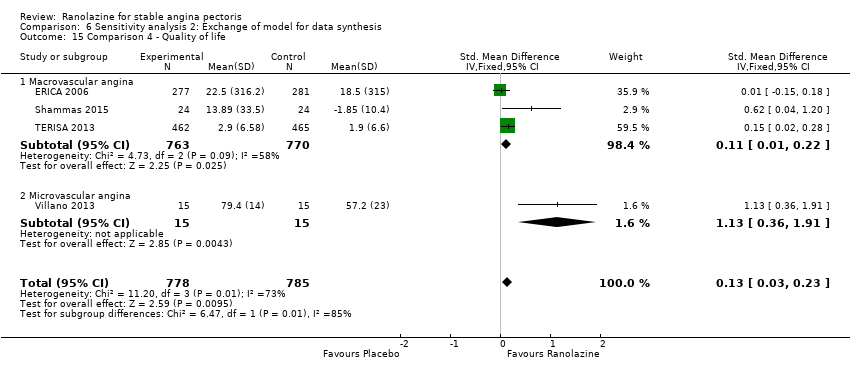Contenido relacionado
Revisiones y protocolos relacionados
Shipeng Zhan, Min Tang, Fang Liu, Peiyuan Xia, Maoqin Shu, Xiaojiao Wu | 19 noviembre 2018
Deren Wang, Bian Liu, Wendan Tao, Zilong Hao, Ming Liu | 25 octubre 2015
Noah Vale, Alain J Nordmann, Gregory G Schwartz, James de Lemos, Furio Colivicchi, Frank den Hartog, Petr Ostadal, Stella M Macin, Anho H Liem, Edward J Mills, Neera Bhatnagar, Heiner C Bucher, Matthias Briel | 1 septiembre 2014
Lars G Hemkens, Hannah Ewald, Viktoria L Gloy, Armon Arpagaus, Kelechi K Olu, Mark Nidorf, Dominik Glinz, Alain J Nordmann, Matthias Briel | 27 enero 2016
Arturo J Martí-Carvajal, Ivan Solà, Dimitrios Lathyris, Mark Dayer | 17 agosto 2017
Agustín Ciapponi, Rudolf Pizarro, Jeff Harrison | 20 marzo 2017
Naqash J Sethi, Sanam Safi, Steven Kwasi Korang, Asbjørn Hróbjartsson, Maria Skoog, Christian Gluud, Janus C Jakobsen | 23 febrero 2021
Chen Mao, Xiao‐Hong Fu, Jin‐Qiu Yuan, Zu‐Yao Yang, Vincent CH Chung, Ying Qin, Yafang Huang, Wilson Wai San Tam, Joey SW Kwong, Wei Xie, Jin‐Ling Tang | 21 mayo 2015
Linda Long, Lindsey Anderson, Alice M Dewhirst, Jingzhou He, Charlene Bridges, Manish Gandhi, Rod S Taylor | 2 febrero 2018
Qiang Su, Tun Swe Nyi, Lang Li | 18 mayo 2015
Respuestas clínicas Cochrane
Dane Gruenebaum | 16 octubre 2017














































































